“and this is how I met Tyler Durden”.
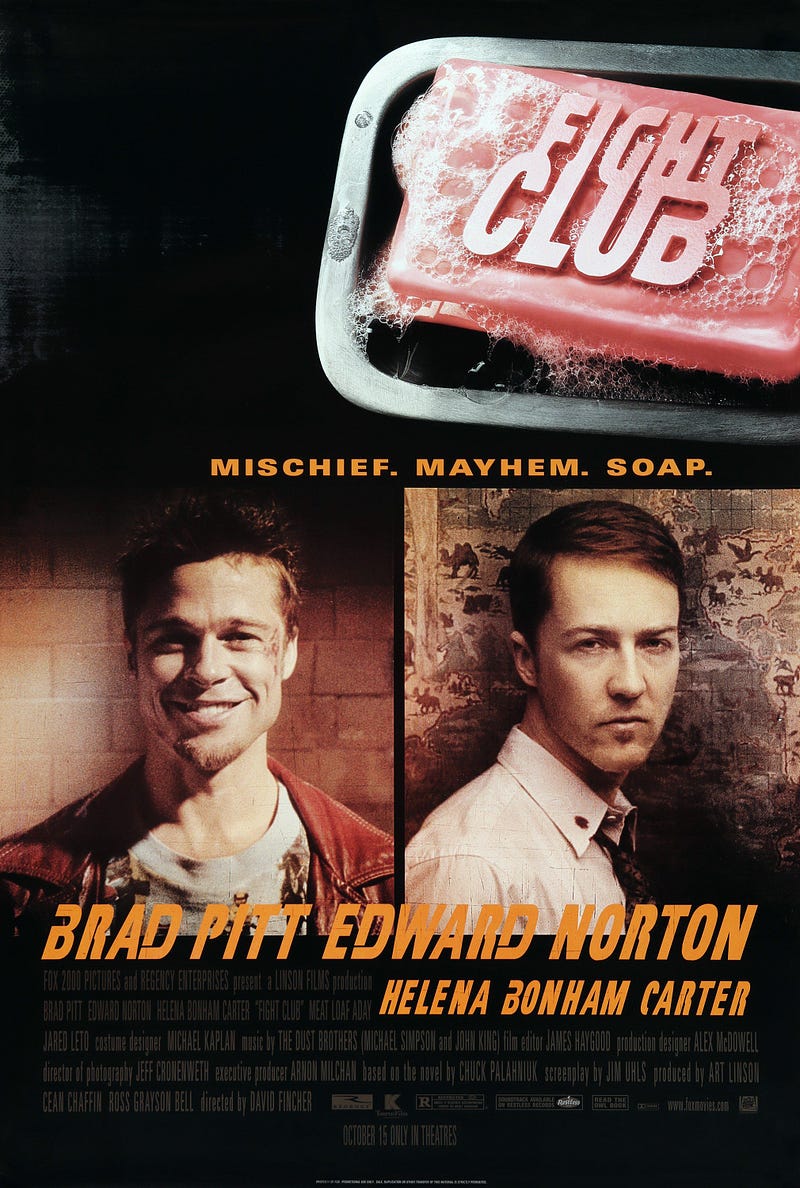
Hello and welcome to the “how old do you feel now?” portion of my re-released film articles! Fight Club was released 23 years ago, my opus blog article linked below on the cinematic career of it’s director David Fincher spans 22 years and the original spoiler free review reproduced here was written over a decade ago. So how old do you feel now?
Re-reading my original review, let’s say it’s a little enthusiastic! I was a younger man then, so please excuse the youthful exuberance!
Regardless, please don’t tell anyone about this review. Rules must be strictly adhered to, you know that. Or you’re about to find out.
Everything’s a copy of a copy of a copy, anyway.
David Fincher — 22 Years in Film
Alien 3, Se7en, The Game, Fight Club, Panic Room, Zodiac, Benjamin Button, Social Network, Girl With The Dragon Tattoo…medium.com

“and this is how I met Tyler Durden”.
Where do you start with Fight Club? A film that continues to split opinion between a violent, sweary, semi misogynistic wrap of a film that glorifies violence and wants a violent rebellion, to on a subconscious (dare I say more enlightened?) level, a rallying cry against modern living, of fractured lives, of a brighter future and a new beginning away from “Planet Starbucks” perhaps?
Based on the excellent (and thoroughly recommended) book of the same name by Chuck Palahniuk and a wonderful screenplay from Jim Uhls, Director Fincher also relied heavily on some wonderfully frenetic editing from James Haygood and in particular stellar cinematography from Director of Photography Jeff Cronenweth. Combine this with some wonderfully diverse and surreal characters, brilliant portrayals from some of cinema’s finest character actors and mix in a pulsing and unrelenting musical score from The Dust Brothers and you have Fight Club. But please remember before you proceed:
“The first rule of Fight Club is — You do not talk about Fight Club”.
The opening 20 minutes of this 139 minute modern day classic is an utter tour de force of film making, briefly dissected below:
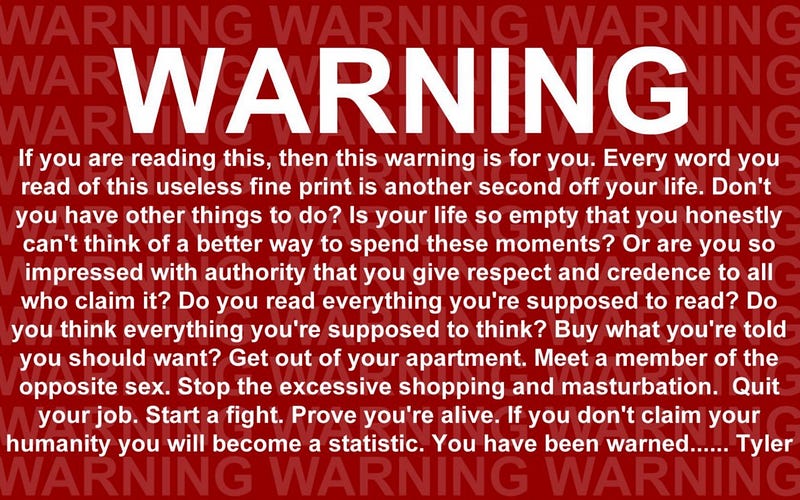
The opening titles are seemingly one long continuous shot inside the veins of the human body only broken by intermittent flashes of the actor’s names and technical support staff until finally we see what looks like human skin and a single hair follicle. This quickly zooms, still in a continuous shot to the barrel of a gun, the tip of which is inside a frightened man’s mouth. As the Dust Brothers iconic pulsing opening track “Stealing Fat” ends, so begins “The Narrator” and his opening narration of “People are always asking me if I know Tyler Durden”. Cutting away from the unnamed man, the gun now removed from his mouth, we see the first of many David Fincher trademark camera moves as with The Narrator still constantly narrating, the camera moves in between, around and often through the building in which the unnamed man is housed, the charges and explosives set, and the havoc about to be wrought by “Project Mayhem”.
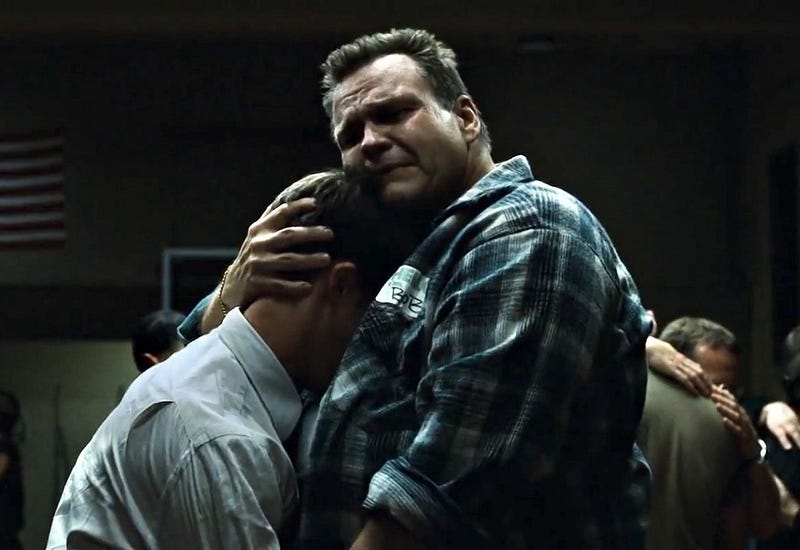
Brief cuts follow before the unnamed man, reminiscing and thinking about “Marla Singer” (Helena Bonham Carter) is now in an embrace with “Bob” (Meat Loaf) and his infamous “Bitch Tits”. As The Narrator informs us, the unnamed man suffers from insomnia and in an attempt to resolve this he now visits various self help groups to relax, be himself or at least be someone and be with others, however bizarre and inappropriate the circumstances. With another trademark David Fincher about turn, the film grinds to a halt as we now rewind to fill the back story of how this still unnamed man got here, how he began visiting these self help groups and why. Numerous jump cuts (with continual narration) see him unable to sleep, falling asleep at work, lamenting that “Everything is a copy, of a copy, of a copy” whilst standing barely awake at a photocopier.
However it’s the quick flash of a Starbucks cup and more importantly the first flash of another man’s image in the background that catches your eye almost on a sub conscious level. A brief interlude follows as The Narrator decries the world in which we live and how the Corporations now run our daily lives.
From one bizarre interlude we cut to another, however The Narrator is now far more self critical of his life and how he has blended in with the norm. This is aptly and bizarrely depicted as our unnamed man walks in between the pages of a “Furni” catalogue (doubling for an Ikea catalogue) as he continues to decry his own life and his frustrations with modern life. From here we go full circle as a visit to his Doctor and his tongue in cheek suggestion of visiting self help groups bring us back to his embrace with Bob, but not before the second subconscious “flicker” image of a man next to the Doctor. A third flicker image soon follows.
The film now loops between embraces with Bob and the unnamed man’s visits to other self help/support groups and the great solace he finds in the company of strangers. Here he is able to be someone, anyone. Guided Meditation directs him to his “cave” and his “power animal” and another bizarre interlude inside his cave and his power animal follows. Able to sleep now and feeling better and again in an embrace with Bob, his serenity is broken by the introduction of Marla Singer! Striding into a male support group heavily smoking she calmly questions “This is cancer, right?”
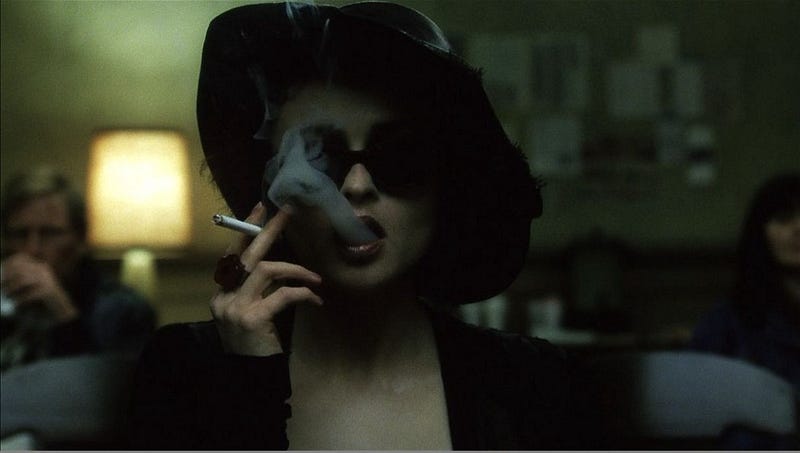
Constantly smoking and seemingly following the unnamed man to every support group, his anger rises as does the ire of The Narrator “Marla, the big tourist” and “Her lie reflected my lie”, he watches her walk away from their latest support group, accompanied by the fourth subconscious flicker image of a man. Concocting a speech to give to Marla (which is bizarrely played out as a fast forward) we cut to another support group and of “Chloe” (Rachel Singer) dying of cancer whom The Narrator describes as “Chloe looked the way Meryl Streep’s skeleton would look if you made it smile and walk around the party”. Following Chloe’s desperate plea which breaks the heart, the unnamed man’s ire continues to rise and remembering his guided meditation he retreats to his cave and his power animal, however Marla Singer is now occupying his cave!
The unnamed man and Marla are now partners within their groups and they share an interesting joint assessment of their predicament as they discuss the validity of the groups and why they visit them they agree that when people are dying they actually listen “instead of waiting for their turn to speak”, however this is a prelude to their splitting of groups, thus enabling both to reap the benefits they both need and the coming introduction of “Tyler Durden” (Brad Pitt).

The opening, breath taking twenty minutes closes with both a stunning plane crash and the introduction of Tyler Durden. Tyler, a soap salesman and free spirited businessman is everything that our unnamed man isn’t. He is confident, cocksure and in control, whereas “The Narrator” (Edward Norton) is an insomniac, frustrated and desperately unfulfilled as he travels the country inspecting fatal car failures and their reasons. Polar opposites, they are drawn together by circumstance and by a shared goal.
Brad Pitt and Edward Norton share top billing and both produce astounding, career defining performances.
In supporting roles and as noted above, Marla Singer is an acquaintance of both, and is a chain smoking, suicidal neurotic brilliantly portrayed by Helena Bonham Carter. The other major supporting role, again noted above but that needs further clarification is the astounding and surprising performance from Meat Loaf as Bob. His performance as a “juicer”, desperately lonely and unable to cope without the support of his family is both a joy and a real surprise. Another surprising yet smaller role also falls to a rock n roll lead singer, with Jared Leto playing “Angel Face” particularly well.
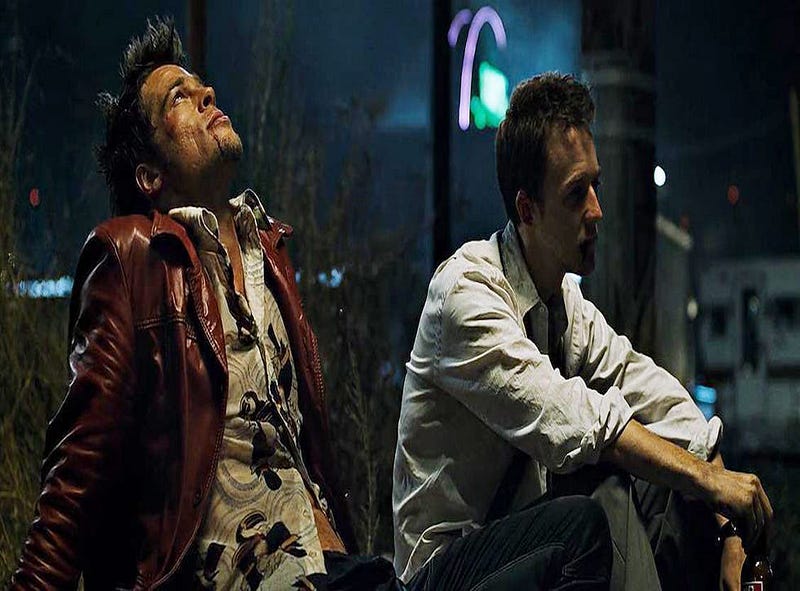
One of the greatest films of all time, Fight Club is not about fighting! Neither does it glorify violence or promote fighting. This was a heavy criticism on release but totally undeserved. The violence is graphic occasionally, with one scene in particular utterly distasteful, difficult to watch but entirely within context. Tyler is seemingly the only character not to succumb to the film’s overt themes of human dislocation and a life of “wanting more”, modern living and the corporatisation of everything — cue cut scene of “Planet Starbucks”. David Fincher’s camerawork is mightily impressive throughout with the camera always moving, the editing sharp, beautiful cinematography and a narrative that although twisting and never letting you settle into the film moves at a pace. You rarely get a chance to fully absorb the narrative, but this is to challenge the film goer.
If you resonate with any of the characters, you’ll love this film.
If you resonate with more than one character, go seek help!
Four minutes into the film you see the first of many flashes/subconscious images and this is a repeating pattern throughout. As is the use of a penis (many subtle and not so subtle flashes and images) and there’s a glorious splicing of a penis image just before the end! These images are wholly pertinent for a number of reasons (spoilers won’t allow for an explanation), but these are very definitely salient metaphors for the film as a whole.
One of the most quotable films of modern times and against the grain of my other film blogs I’ve quoted a large number here. Mainly as this film resonates so deeply with me and a personal favourite of many years and also to give some very real context to the film itself. On the surface the characters described and the constant narration may seem like a film that is a disjointed mess, but this is far from the truth. The Narrator’s role is key (note his rising apathy toward his subject as the film progresses). His running commentary from a magazine article whilst describing the article in the first person provides classic quotes of “I am Jack’s raging bile duct” “I am Jack’s complete lack of surprise” and “I am Jack’s broken heart” amongst many more.
Separately “We have just lost cabin pressure…” aptly describes the film’s crunching realisation towards the end of Act 2.
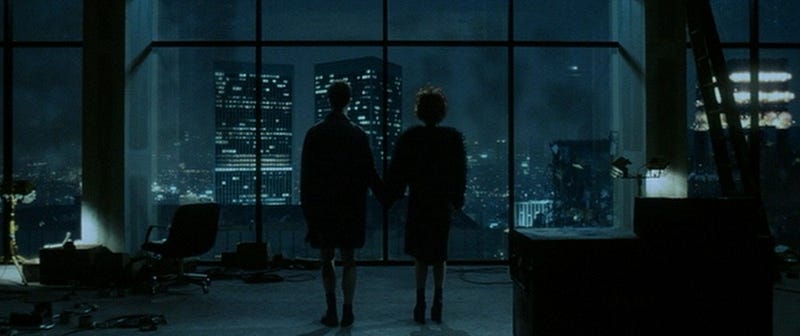
I love this film on a par with PT Anderson’s Magnolia. You may have read about this somewhere else? If you haven’t, can I direct you to my Paul Thomas Anderson film blog? Differently to Magnolia, there are only four main characters here, but Brad Pitt, Edward Norton, Helena Bonham-Carter and Meatloaf provide stunning central performances and are just pitch perfect in every way. I love the openness of the film, with the high comedy always resonating, the in jokes and nods to the camera almost “tipping you the wink” to use an old and underused phrase today. The film takes itself incredibly seriously yet it also winks at you to go along for the ride.
The themes of the film are self evident throughout, of dislocation and desperation of a world seemingly taken away from the populace. Of a loss of identity in a corporate world driven by greed and profit above anything and everything else. And of starting afresh, from year zero and rebuilding a world that everyone can enjoy equally. Much more besides and I have to keep reminding myself that this is “just a film!” It blew my mind on release, when pleasantly stoned.
It blows my mind still.
Thanks for reading. Just for larks as always, and always a human reaction rather than spoilers galore. My three most recently published film articles are linked below or there’s well over 100 blog articles (with 300+ individual film reviews) within my archives from which to choose:
“Kill Bill: Volume 2 (2004)
“Hello Kiddo”medium.com
“Steve Jobs” (2015)
“We blow this and IBM will own the next 50 years like a Batman villain”.medium.com
“Red State” (2011)
“Even the Nazi’s think this guy is nuckin’ futs!”medium.com



